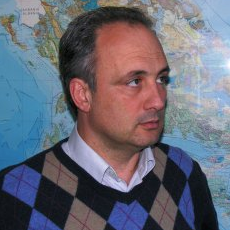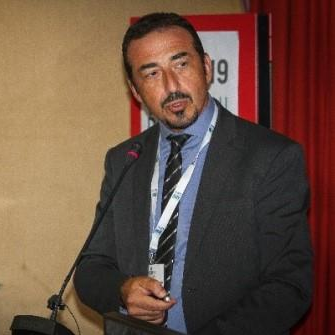Remote Sensing of Earthquakes and Earthquake-Triggered Landslides
A special issue of Remote Sensing (ISSN 2072-4292). This special issue belongs to the section "Remote Sensing in Geology, Geomorphology and Hydrology".
Deadline for manuscript submissions: closed (31 May 2019) | Viewed by 10607
Special Issue Editors
Interests: earthquake geology—paleoseismology; geology of Greece; hazard analysis and secondary effects of earthquakes; quantitative monitoring of post-earthquake landslides with the use of UAVs
Special Issues, Collections and Topics in MDPI journals
Interests: SAR; InSAR; satellite remote sensing; earthquakes; active tectonics; surface deformations
Special Issues, Collections and Topics in MDPI journals
Special Issue Information
Dear Colleagues,
Over the last twenty years the increase in the quantity and quality and the free availability of satellite data has made remote sensing a powerful tool for geoscientists and geophysicists studying the impact of earthquakes on the Earth’s surface and society.
This impact strengthens the need to fully utilize the landscape of the Earth as a proxy for interior processes, providing data that will mitigate the earthquake vulnerability to primary and secondary effects. At present, several earthquake examples indicate that the megacities created by rapid urbanization have developed in unsafe areas and this has led to far greater losses than those experienced in the past. For the study of the Earth’s surface, the remote sensing research techniques can be divided into major categories: the first category contains satellite InSAR and GNSS, which are rather well known as key techniques for highlighting surface deformations during earthquakes within days, if not hours, after the data acquisition. Today, the InSAR technique is ideal for the analysis of wide areas, thanks to the recent Sentinel 1a-b missions able to ensure the strong stability of image acquisition. On the contrary, InSAR is also suitable for providing more detailed analysis at the meter resolution over smaller regions exploiting VHR SAR platforms, COSMO-SkyMed and TerraSAR-X. However, InSAR still needs external data to proceed with accurate calibration and poses new challenges to the scientific community for further progress.
In the second category, the new technology of UAVs, which acquire primarily optical data, is suitable for the damage assessment and monitoring. The UAV technique is promising to fill some of the gaps in the resolution of satellites or classic aerial photos. The UAV data can be combined with classic aerial photos or other satellite products and is ideal for the analysis of rather small landscapes. Due to the flexibility of the UAV technique it is ideal for the purposes of the long-term monitoring of secondary earthquake effects. UAV technology from its infancy until present shows rapid evolution and provides new opportunities for fast, easy and rapid data acquisition within a few hours of an earthquake either for hazard inspection or landscape analysis and monitoring of the secondary effects. Note that systematic and repeated acquisition from dedicated satellites for monitoring purposes is currently lacking. In addition, UAV technologies produce data clouds that can be also compared with terrestrial LiDAR data clouds.
In this special issue of the Remote Sensing journal we welcome feature and research papers. Feature papers must deal with the future research trends in earthquake analysis and/or monitoring of the secondary effects of earthquakes, or the drawbacks of this, or a combination of various remote sensing techniques. Research papers must include case studies of earthquake investigation using photogrammetry techniques based on aerial photos or UAV campaigns monitoring earthquake-triggered landslides. In addition, studies of drainage patterns close to active faults, GNSS networks and InSAR examples of landscapes deformed during or after earthquake events and any combination of major categories of remote sensing data are welcome.
Dr. Ioannis Koukouvelas
Dr. Salvatore Stramondo
Guest Editors
Manuscript Submission Information
Manuscripts should be submitted online at www.mdpi.com by registering and logging in to this website. Once you are registered, click here to go to the submission form. Manuscripts can be submitted until the deadline. All submissions that pass pre-check are peer-reviewed. Accepted papers will be published continuously in the journal (as soon as accepted) and will be listed together on the special issue website. Research articles, review articles as well as short communications are invited. For planned papers, a title and short abstract (about 100 words) can be sent to the Editorial Office for announcement on this website.
Submitted manuscripts should not have been published previously, nor be under consideration for publication elsewhere (except conference proceedings papers). All manuscripts are thoroughly refereed through a single-blind peer-review process. A guide for authors and other relevant information for submission of manuscripts is available on the Instructions for Authors page. Remote Sensing is an international peer-reviewed open access semimonthly journal published by MDPI.
Please visit the Instructions for Authors page before submitting a manuscript. The Article Processing Charge (APC) for publication in this open access journal is 2700 CHF (Swiss Francs). Submitted papers should be well formatted and use good English. Authors may use MDPI's English editing service prior to publication or during author revisions.
Keywords
- remote sensing
- deformed landscapes
- earthquake-triggered landslides
- monitoring landslides
- InSAR
- GNSS
- UAVs






